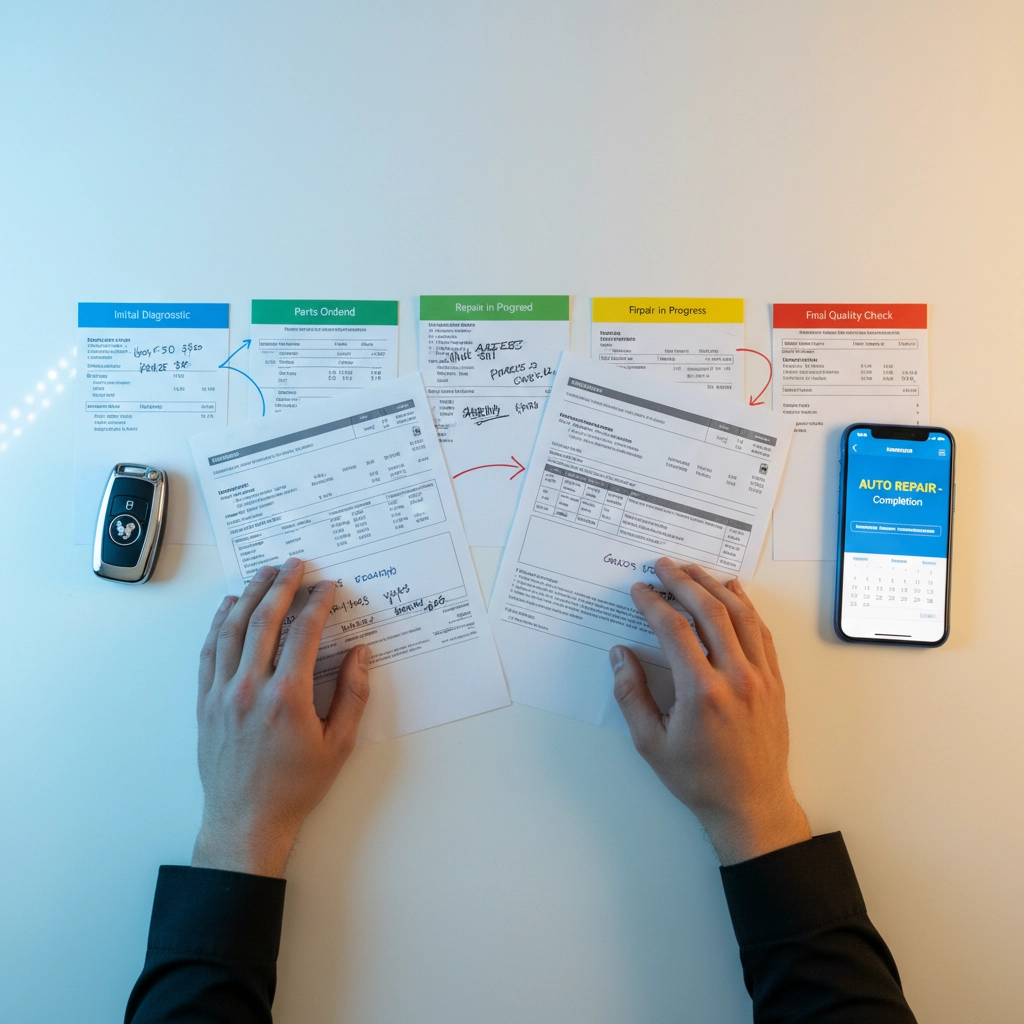Hey there! If you’ve landed on this page, you’re probably dealing with a problematic vehicle and wondering what changed in 2025 with the California lemon law. Well, buckle up: because there have been some pretty significant updates that affect how you need to handle your documentation and claims.
Before you try to tackle this alone, talk with Lemon Law Attorney Sotera L. Anderson. With the 2025 rule changes, having a professional in your corner ensures your case is handled correctly, increases your chances of success, and makes the process as stress-free as possible.
The good news? You still have strong consumer protections. The challenging news? The rules got stricter, deadlines got tighter, and proper documentation became absolutely critical to your success. Let’s break down everything you need to know to protect yourself under the new 2025 regulations.
What Actually Changed in 2025?
California’s lemon law got a major overhaul thanks to Assembly Bill 1755 (AB 1755) and Senate Bill 26 (SB 26). These weren’t just minor tweaks: they fundamentally changed how lemon law claims work in our state.
The biggest changes include:
- Much tighter filing deadlines (we’re talking one year after your warranty expires!)
- Mandatory pre-suit notice requirements that kicked in April 1, 2025
- Required mediation before you can move forward with full legal discovery
- New 30-day vehicle retention rules after giving notice
Think of these changes as California saying, “We want to resolve lemon law disputes faster, but you need to follow the rules precisely.” Miss a step or deadline, and you could lose significant rights and compensation. This is exactly where Lemon Law Attorney Sotera L. Anderson can help: we track every deadline, prepare compliant notices, and manage mediation and negotiations for you so you don’t lose leverage or benefits because of a technicality.

The New Timeline That Changes Everything
Here’s the reality check: Under the 2025 rules, you now have just one year after your vehicle’s express warranty expires to file a lemon law lawsuit, with an absolute maximum of six years from your original delivery date: whichever comes first.
This is a dramatic tightening from previous rules. What does this mean for you? Start documenting problems the moment they appear. Don’t wait, don’t procrastinate, and don’t assume you have unlimited time to figure things out.
The only good news here is that the clock can be paused (legally called “tolling”) for time your vehicle is out of service for repairs, or for up to 60 days after you provide the mandatory pre-suit notice. But this only works if you have rock-solid documentation of these periods. If you’re unsure about your dates or tolling, contact Sotera’s team for a free, no-obligation review—we’ll calculate your deadlines and strategy for you.
Your Documentation Checklist: What You Must Keep
Prefer to have a pro assemble this for you? Our team can review your records, request missing repair orders, and build a clean timeline so mediation and negotiations go smoothly.
Repair Records and Service History
This is your foundation. Every single time your vehicle goes to the shop, you need:
- Repair records from every visit that note the following:
- Exact service dates and times when work was performed on the repair records
- Detailed descriptions of what problems you reported each time
- Names and contact info of service advisors and technicians
- Parts replaced and any diagnostic work performed
Time-Out-of-Service Records
The new law has clearer standards for what constitutes a “reasonable number of repair attempts,” which makes tracking your vehicle’s downtime crucial. Document:
- Drop-off and pick-up dates for every service visit
- Whether you received a loaner vehicle or went without transportation or had to rent a vehicle yourself
- Total cumulative days your vehicle was unavailable
- Any delays in getting parts or scheduling repairs

Defect Documentation
Beyond repair records, you need detailed documentation of the actual problems:
- When the defect first occurred or was first noticed
- How the problem manifests (strange noises, warning lights, performance issues)
- Frequency of the problem (constant, intermittent, getting worse)
- Safety concerns the defect creates
- Photos or videos of the problem when possible
- Written communication with dealers about the issues
The Critical Pre-Suit Notice Requirement
This is probably the biggest change for 2025. You must now provide formal written notice to the manufacturer before filing a lawsuit if you want to preserve your right to civil penalties: which can significantly increase your compensation if the manufacturer acted in bad faith. We draft and send this notice for clients to preserve penalties and avoid missteps that can weaken your claim.
What Your Notice Must Include
Your written notice isn’t just a simple “fix my car” letter. It must contain:
- Your full name and complete contact information
- Your vehicle’s complete Vehicle Identification Number (VIN)
- A comprehensive summary of your repair history
- Detailed descriptions of all vehicle issues and defects
- A specific request for either repurchase or replacement
- The date you’re providing the notice
Timing and Delivery Requirements
You must send this notice at least 30 days before filing any lawsuit. During this 30-day period, the manufacturer has time to respond to your demand. Your notice must be sent to the manufacturer’s specific designated address.

The 30-Day Vehicle Retention Rule
Here’s something that catches many people off guard: After you send your pre-suit notice, you must keep the vehicle for 30 days. You can’t sell it, trade it in, or get rid of it during this period.
We’ll guide you on what to do—and what not to do—so you don’t risk your claim during this window. During these 30 days:
- Continue documenting any additional problems
- Keep records of any manufacturer communications
- Note when you try to use the vehicle and what issues occur
- Save all correspondence related to your claim
Mandatory Mediation: What It Means for Your Documentation
If the manufacturer does not buyback your vehicle after you send the 30 day notice, you can file your lawsuit. The 2025 rules require mediation before you can move to full legal discovery. This means you need your documentation organized and ready to present to a neutral mediator before you even get to the traditional lawsuit phase. Attorney Sotera L. Anderson represents you in mediation, presents your case clearly, and negotiates for the best outcome—so you don’t have to navigate it alone.

Best Practices That Strengthen Your Case
Go Beyond the Minimum
While the law specifies minimum requirements, exceeding them strengthens your position:
- Take photos or videos of defects when safely possible
- Save all text messages and emails with dealers or manufacturers
- Keep contemporaneous notes about how defects affect your daily life
- Document safety concerns in detail
- Record any out-of-pocket costs for repairs or alternative transportation
Stay Consistent and Accurate
Never alter, backdate, or embellish your documentation. Manufacturers scrutinize records for inconsistencies, and any discrepancies can undermine your entire claim. If you made an error in your initial documentation, note the correction clearly rather than trying to cover it up.
Act Quickly
The compressed timelines mean you can’t afford to wait. Start documenting issues immediately when they occur, and don’t delay in seeking repairs or maintaining records. Dealers may not retain service records indefinitely, and your memory of specific details will fade over time.
Common Mistakes That Can Sink Your Case
Don’t let these common errors derail your claim:
- Failing to provide pre-suit notice before filing a lawsuit (you’ll lose civil penalties)
- Not maintaining complete repair orders or service records (can’t prove reasonable repair attempts)
- Missing time-out-of-service documentation (weakens your claim even with proven repair attempts)
- Not keeping the vehicle for 30 days after pre-suit notice (may result in court sanctions)
- Poor organization of documents (creates doubt about your attention to detail)
Avoid these pitfalls by getting qualified legal help early—one call to our office can save your claim and your sanity.

Your Action Plan Moving Forward
If you’re dealing with a lemon vehicle in California, here’s your immediate action plan:
- Start documenting everything now: don’t wait for the next repair attempt
- Contact Lemon Law Attorney Sotera L. Anderson for a free, no-obligation case evaluation—we’ll review your documentation, calculate your deadlines, and lay out your best path. There are no fees or costs to you; manufacturers pay our legal fees under California law.
The 2025 changes to California’s lemon law make proper documentation more critical than ever, but they don’t eliminate your consumer protections. With careful attention to the new requirements and meticulous record-keeping, you can still build a strong case for repurchase of your problematic vehicle.
Remember, the manufacturers have teams of lawyers and specialists working on their side. Make sure you have the documentation and expertise to level the playing field. Your consumer rights are still strong under California law: you just need to follow the new rules precisely to protect them.
If you’re feeling overwhelmed by these new requirements or want professional guidance on your specific situation, don’t hesitate to reach out. At the Law Offices of Sotera L. Anderson, we make the process stress-free: start with a free, in-depth, no-obligation case evaluation, and let us handle the notices, deadlines, mediation, and negotiations. You pay nothing out of pocket—manufacturers pay our legal fees. We offer personal, hands-on representation, quick resolutions, and a track record of 5-star reviews. Visit calemonlawattorney.com or call 855-965-3666 to get help today.
 Call Us Now
Call Us Now Text Us Now
Text Us Now
 (855) 965 3666
(855) 965 3666

